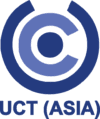In today’s competitive market, maximizing manufacturing merchandise success is not just a goal, it’s a necessity. At UCT Asia, we understand this need and offer comprehensive services to help you achieve success in your merchandise manufacturing journey.
Success in manufacturing merchandise is a multifaceted process. It requires efficient production processes, stringent quality control, and effective use of resources.
Efficient Production Processes
Efficiency is the lifeblood of successful merchandise manufacturing, and at UCT Asia, we’ve made it the cornerstone of our operations. Our production processes have been meticulously streamlined to ensure that every step, from planning to execution, is carried out with precision and speed. This commitment to efficiency is not just about increasing productivity; it’s about delivering value to our clients.
Timely arrival of inputs is one such area. The efficiency of our supply chain management ensures the prompt arrival of raw materials at our production sites. This eliminates the risk of production delays that can result from late raw material deliveries, ensuring that our production schedules remain on track and that we can fulfill time-sensitive orders.
Our adept supply chain management also results in lower transport costs. By optimizing our supply chain, we are able to reduce overheads and direct sales costs, resulting in significant cost savings for our clients.
Automation, in particular, plays a crucial role in cutting costs for businesses. By automating repetitive and time-consuming tasks, we’re able to reduce labor costs, increase productivity, and minimize errors, leading to significant cost savings.
Quality Control at UCT Asia
Our quality control process begins with the careful selection of raw materials, ensuring they meet our stringent quality criteria. During the production phase, our dedicated quality control team conducts thorough inspections at various stages. These inspections are designed to identify and rectify any potential defects or deviations from the established quality standards.
In addition to these inspections, we also employ advanced testing methods and equipment to verify the quality and performance of our merchandise. This rigorous approach to quality control ensures that any issues are promptly addressed, preventing defective merchandise from reaching our clients.
Identifying and Addressing Different Types of Waste in Manufacturing
- Overproduction: Producing more products than required can lead to excessive use of raw materials and potential environmental consequences.
- Inventory: Unprocessed inventory waste can tie up capital and increase storage and transportation costs.
- Motion: Any unnecessary movement, from a warehouse worker picking something up to additional wear and tear on machines, adds non-value-added time and increases cost.
- Defects: Lack of proper documentation, large variances within inventory, and poor design can impact time, money, resources, and customer satisfaction.
- Over-processing: Any part of the manufacturing process that’s unnecessary, such as producing outside the scope of the project or poor communication, can lead to waste.
- Waiting: Wasted time for people, material, or machinery because production is slowed or stopped can affect direct labor costs and overhead costs.
- Transport: Moving materials from one place to another doesn’t directly add value to the product itself and can increase costs.
- Non-utilized talent: Not making the most of employees’ potential talent can lead to inefficiencies and lost opportunities.
At UCT Asia, we’ve implemented strategies to reduce these types of waste:
Implementing Efficient Inventory Management: We use advanced inventory management systems to ensure we have the right amount of inventory at the right time. This reduces inventory waste and frees up capital.
Reconsidering Sustainable Packaging Materials: We’re always looking for ways to make our packaging more sustainable. By using recyclable or biodegradable materials, we can reduce waste and lessen our environmental impact.
Reducing Production Costs: A Strategic Approach
In the competitive manufacturing landscape, reducing production costs is a strategic necessity.
Indirect Costs: Indirect costs are expenses that are not directly tied to a specific product, such as utilities, rent, and administrative salaries. To reduce these costs, we continuously monitor and analyze our expenses, looking for areas where we can improve efficiency. For instance, we might negotiate better terms with utility providers or implement energy-saving measures to reduce utility costs.
Direct Costs: Direct costs are expenses directly related to the production of goods, such as raw materials and direct labor. We work closely with suppliers to negotiate the best prices for raw materials and regularly review our production processes to ensure we’re using materials as efficiently as possible.
Labor Costs: Labor costs can be a significant portion of production costs. We strive to maximize labor efficiency by providing ongoing training to our employees, ensuring they have the skills to perform their jobs effectively. We also use automation where possible to reduce the need for manual labor.
Variable Costs: Variable costs are expenses that change in direct proportion to the volume of goods produced, such as raw materials and direct labor. To manage these costs, we use advanced forecasting tools to accurately predict demand, allowing us to better manage our inventory and production schedules.
Reach out to UCT Asia today. Our team of experts is ready to guide you through the process, providing tailored solutions to meet your specific needs. Let’s work together to create high-quality merchandise that enhances your brand reputation and drives customer satisfaction.

